Abstract
Uptake of 3H-thymidine by resting cells of Pediococcus cerevisiae was found to be energy- and temperature-dependent. The pH optimum was between 6.5 and 8.0, and after 2 min of incubation most of the radioactivity was found in the deoxyribonucleic acid (DNA) fraction. Iodoacetate at a concentration of 10−2m caused a 50% inhibition of uptake. Preincubation of resting cells for 10 min with folinate (10−3μ mole/ml) diminished the 3H-thymidine uptake by 75%. In growing cells, the folinate-induced inhibition was still more striking. Deoxyuridine augmented the folinate effect, whereas fluorodeoxyuridine and aminopterin or amethopterin abolished it. Preincubation with folinate did not interfere with the uptake of 3H-amethopterin, and thus the inhibitor did not compete for uptake sites within the cell. The role of these inhibitors in reversing the folinate effect is discussed. Cells preincubated with folinate showed an increased incorporation of 14C-uracil into DNA, presumably after prior conversion to thymidylate. We concluded that the folinate effect was due to stimulation of de novo thymidylate synthesis with concomitant inhibition of the uptake of external thymidine.
Full text
PDF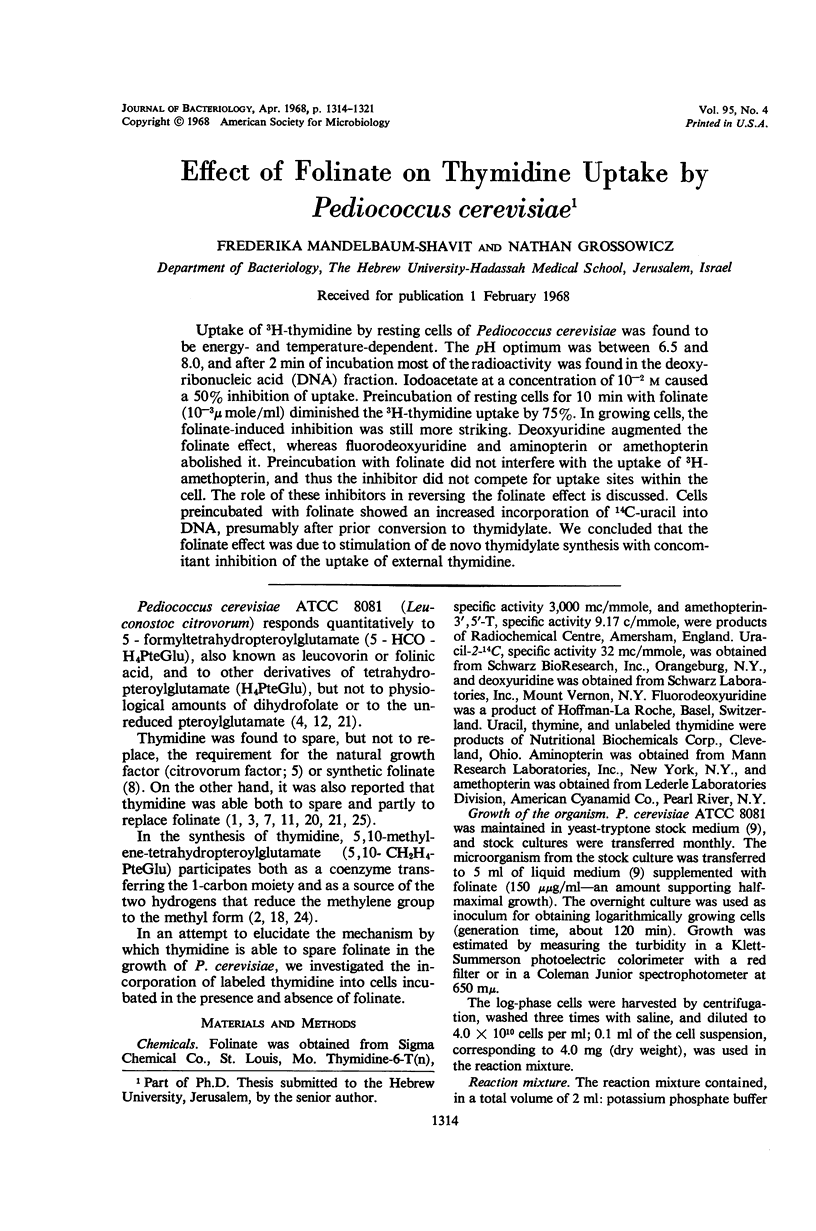
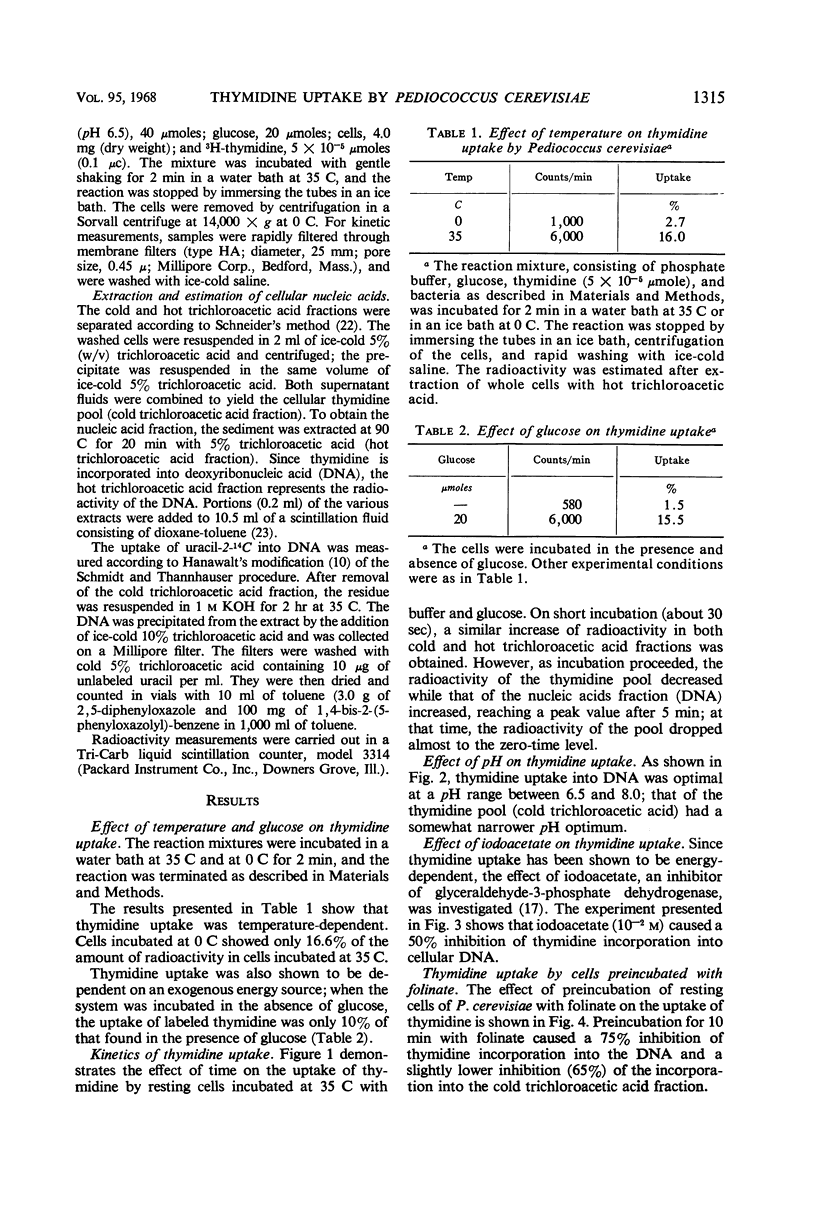
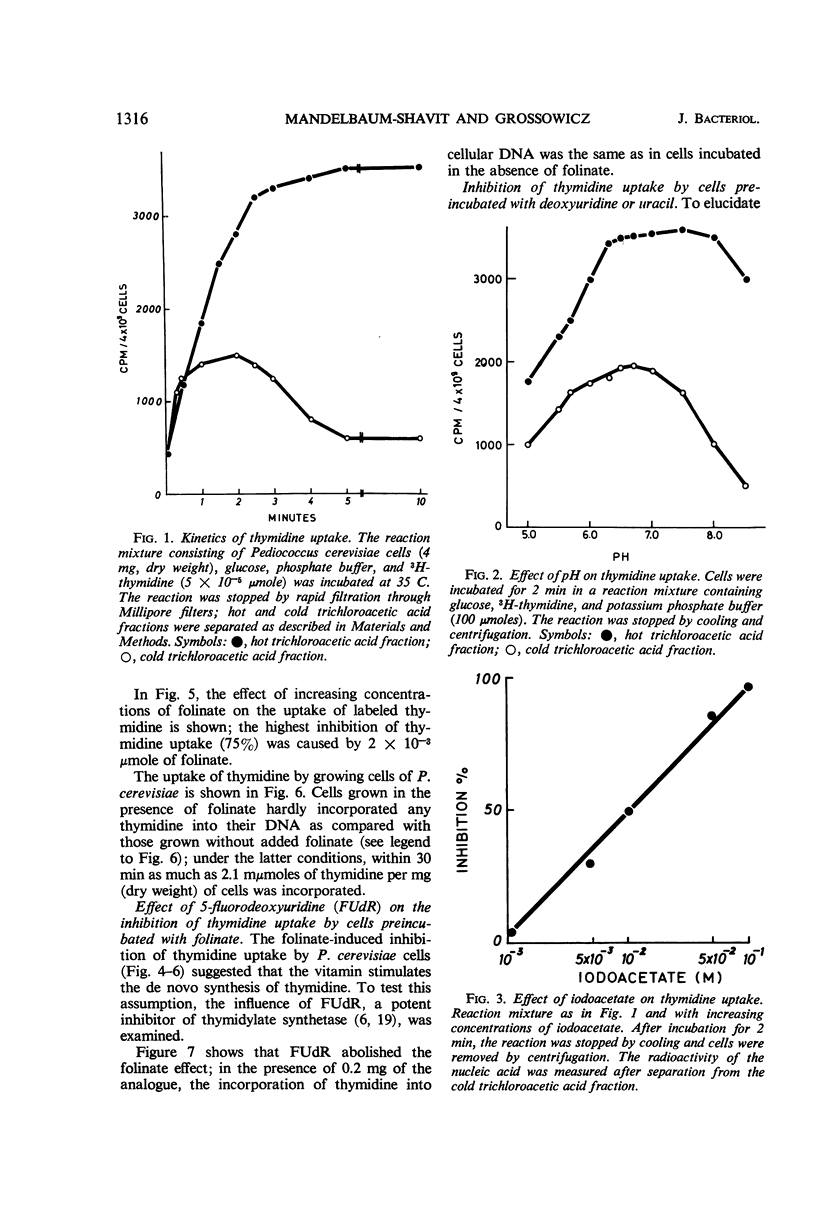
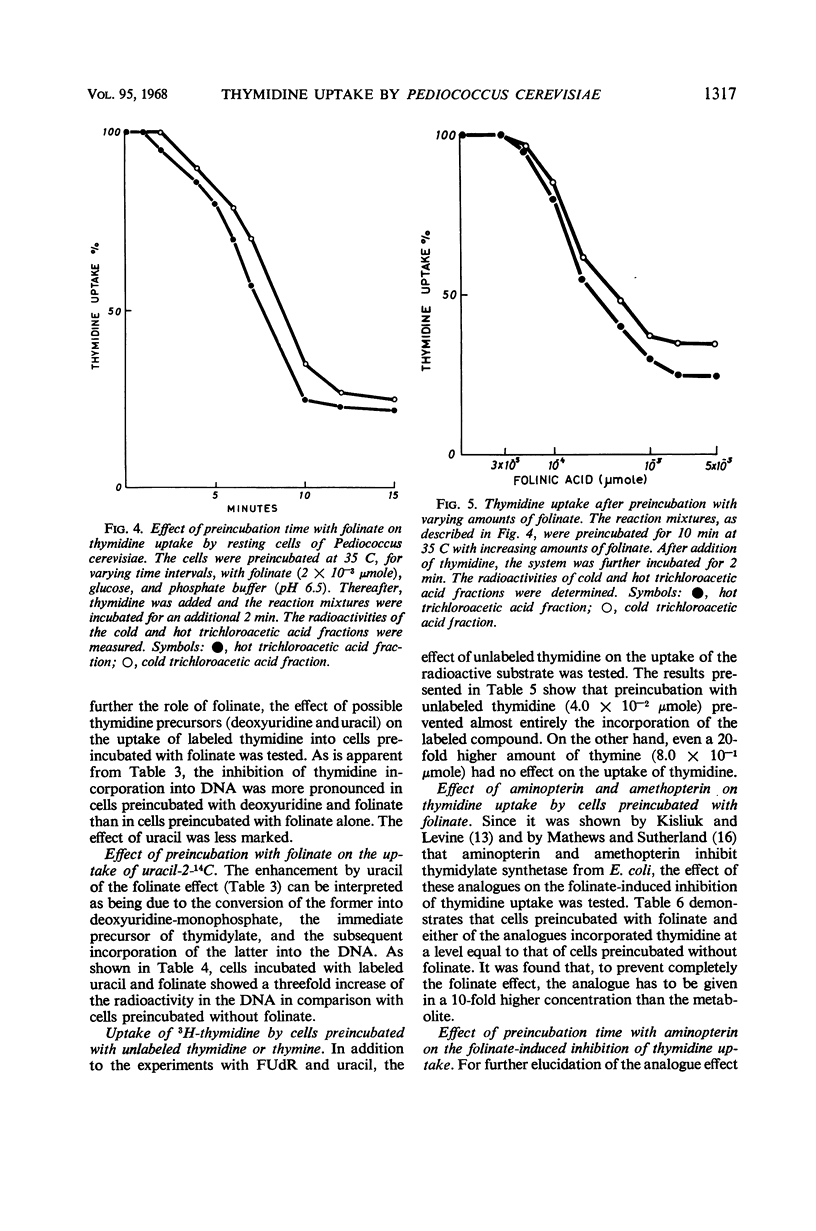
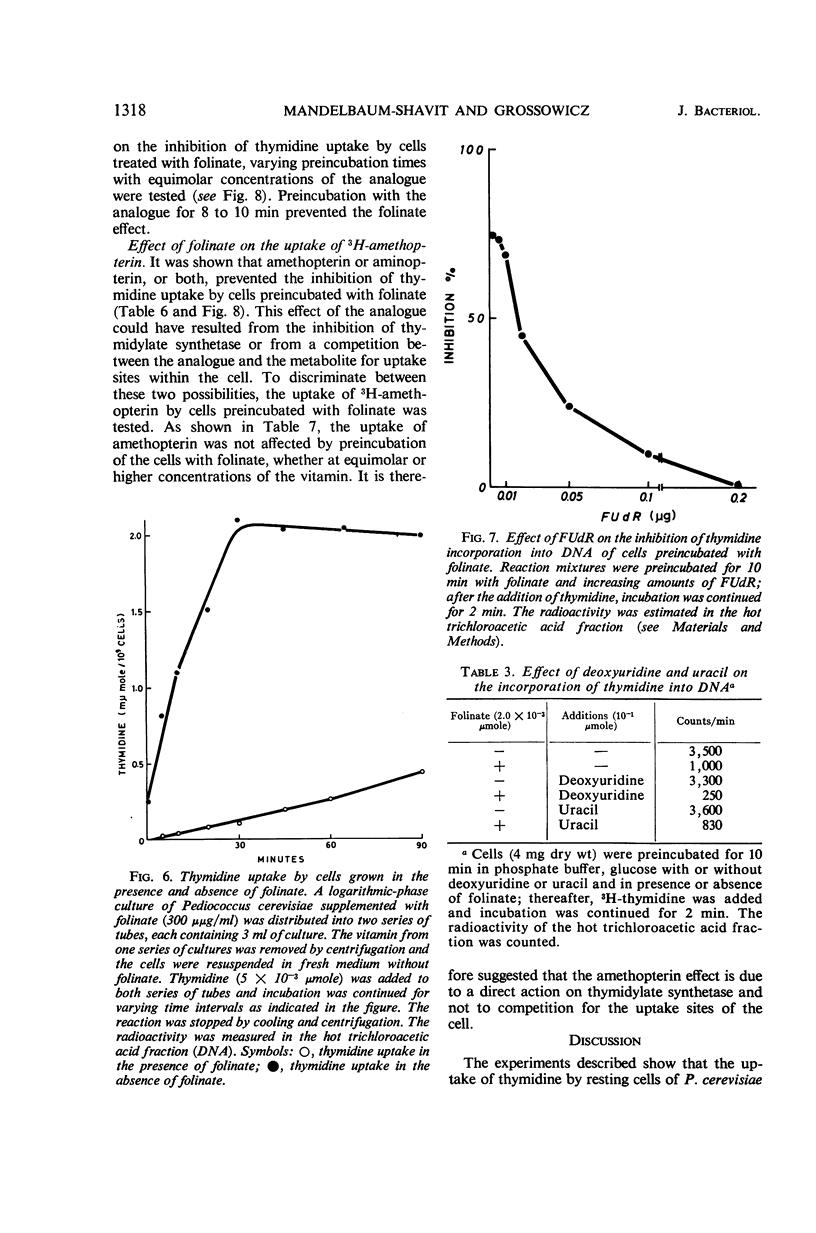

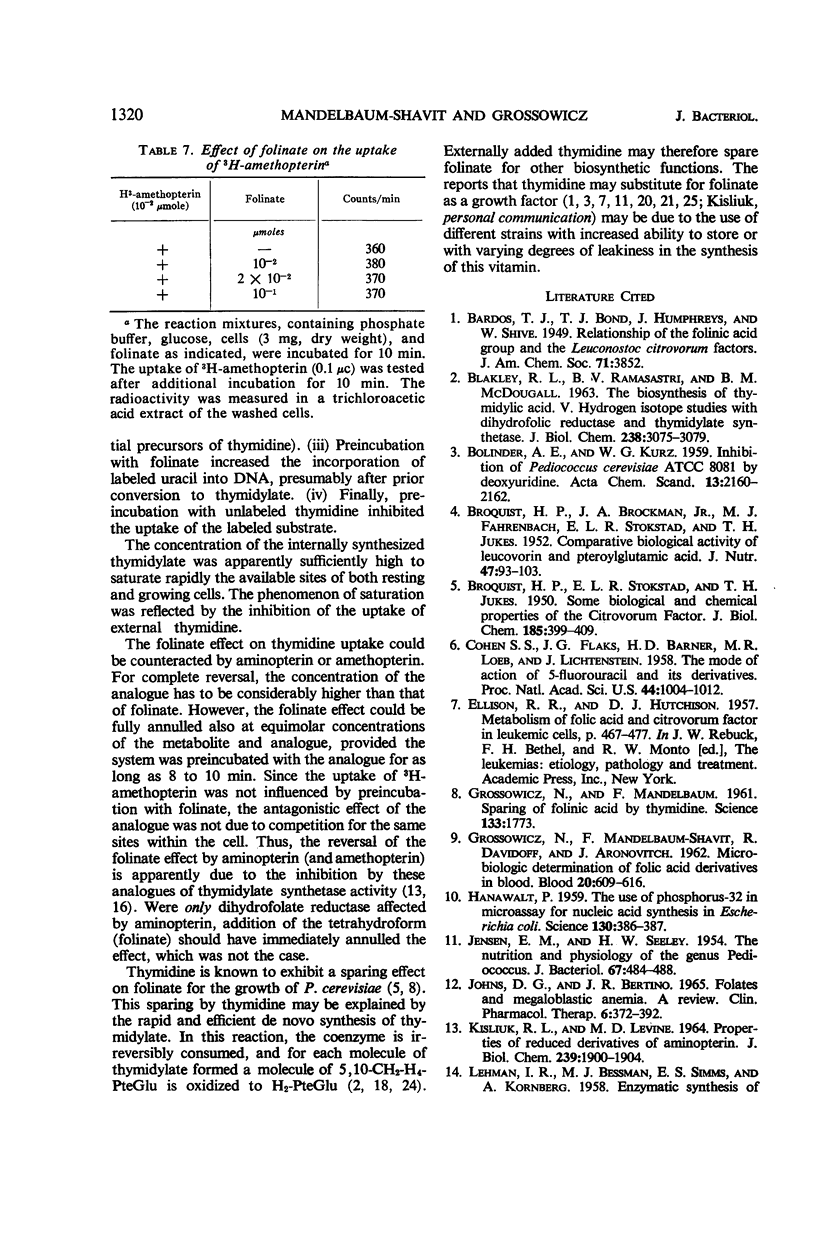
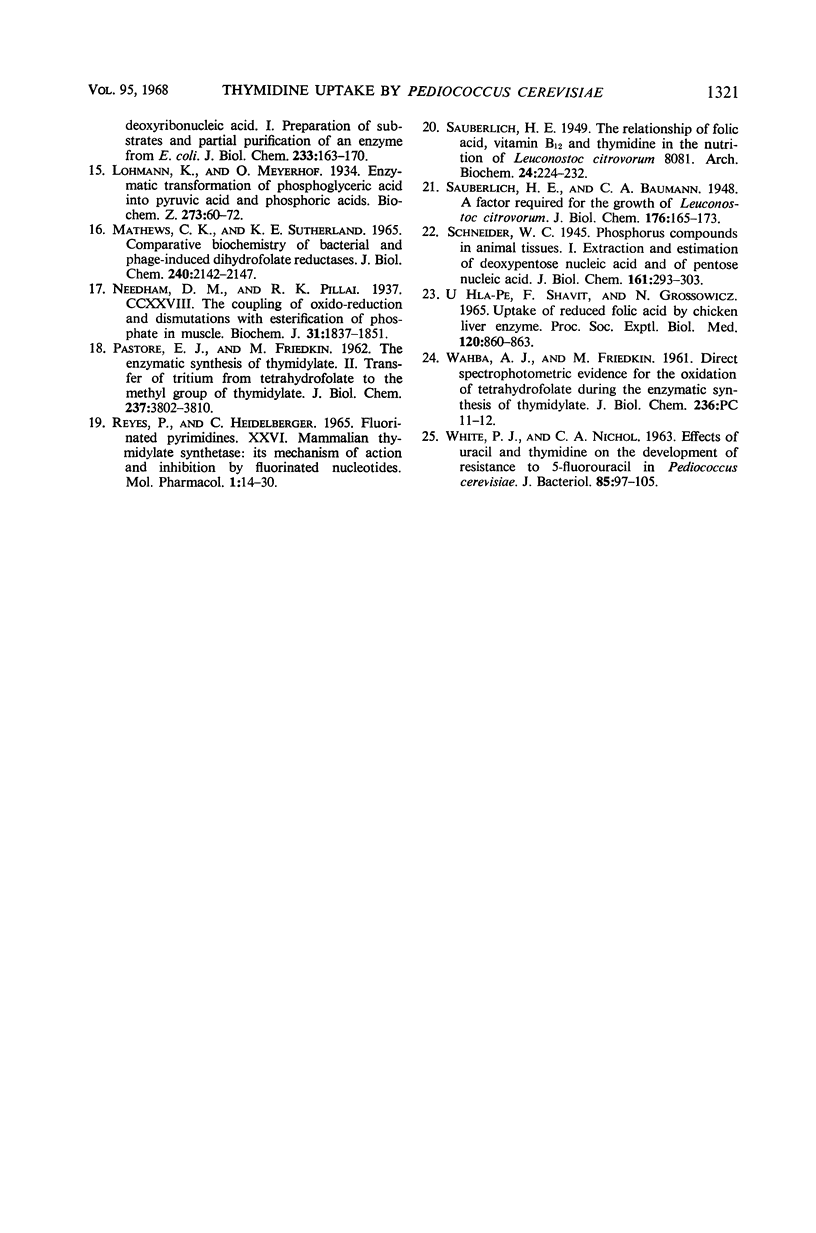
Selected References
These references are in PubMed. This may not be the complete list of references from this article.
- BLAKLEY R. L., RAMASASTRI B. V., MCDOUGALL B. M. THE BIOSYNTHESIS OF THYMIDYLIC ACID. V. HYDROGEN ISOTOPE STUDIES WITH DIHYDROFOLIC REDUCTASE AND THYMIDYLATE SYNTHETASE. J Biol Chem. 1963 Sep;238:3075–3079. [PubMed] [Google Scholar]
- BROQUIST H. P., BROCKMAN J. A., Jr, FAHRENBACH M. J., STOKSTAD E. L. R., JUKES T. H. Comparative biological activity of leucovorin and pteroylglutamic acid. J Nutr. 1952 May;47(1):93–103. doi: 10.1093/jn/47.1.93. [DOI] [PubMed] [Google Scholar]
- BROQUIST H. P., STOKSTAD E. L. R., JUKES T. H. Some biological and chemical properties of the citrovorum factor. J Biol Chem. 1950 Jul;185(1):399–409. [PubMed] [Google Scholar]
- Cohen S. S., Flaks J. G., Barner H. D., Loeb M. R., Lichtenstein J. THE MODE OF ACTION OF 5-FLUOROURACIL AND ITS DERIVATIVES. Proc Natl Acad Sci U S A. 1958 Oct 15;44(10):1004–1012. doi: 10.1073/pnas.44.10.1004. [DOI] [PMC free article] [PubMed] [Google Scholar]
- GROSSOWICZ N., MANDELBAUM-SHAVIT F., DAVIDOFF R., ARONOVITCH J. Microbiologic determination of folic acid derivatives in blood. Blood. 1962 Nov;20:609–616. [PubMed] [Google Scholar]
- GROSSOWICZ N., MANDELBAUM F. Sparing of folinic acid by thymidine. Science. 1961 Jun 2;133(3466):1773–1773. doi: 10.1126/science.133.3466.1773. [DOI] [PubMed] [Google Scholar]
- HANAWALT P. Use of phosphorus-32 in microassay for nucleic acid synthesis in Escherichia coli. Science. 1959 Aug 14;130(3372):386–387. doi: 10.1126/science.130.3372.386. [DOI] [PubMed] [Google Scholar]
- Hla-Pe U., Shavit F., Grossowicz N. Uptake of reduced folic acid by chicken liver enzyme. Proc Soc Exp Biol Med. 1965 Dec;120(3):860–863. doi: 10.3181/00379727-120-30675. [DOI] [PubMed] [Google Scholar]
- JENSEN E. M., SEELEY H. W. The nutrition and physiology of the genus Pediococcus. J Bacteriol. 1954 Apr;67(4):484–488. doi: 10.1128/jb.67.4.484-488.1954. [DOI] [PMC free article] [PubMed] [Google Scholar]
- JOHNS D. G., BERTINO J. R. FOLATES AND MEGALOBLASTIC ANEMIA: A REVIEW. Clin Pharmacol Ther. 1965 May-Jun;6:372–392. doi: 10.1002/cpt196563372. [DOI] [PubMed] [Google Scholar]
- KISLIUK R. L., LEVINE M. D. PROPERTIES OF REDUCED DERIVATIVES OF AMINOPTERIN. J Biol Chem. 1964 Jun;239:1900–1904. [PubMed] [Google Scholar]
- LEHMAN I. R., BESSMAN M. J., SIMMS E. S., KORNBERG A. Enzymatic synthesis of deoxyribonucleic acid. I. Preparation of substrates and partial purification of an enzyme from Escherichia coli. J Biol Chem. 1958 Jul;233(1):163–170. [PubMed] [Google Scholar]
- MATHEWS C. K., SUTHERLAND K. E. COMPARATIVE BIOCHEMISTRY OF BACTERIAL AND PHAGE-INDUCED DIHYDROFOLATE REDUCTASES. J Biol Chem. 1965 May;240:2142–2147. [PubMed] [Google Scholar]
- Needham D. M., Pillai R. K. The coupling of oxido-reductions and dismutations with esterification of phosphate in muscle. Biochem J. 1937 Oct;31(10):1837–1851. doi: 10.1042/bj0311837. [DOI] [PMC free article] [PubMed] [Google Scholar]
- PASTORE E. J., FRIEDKIN M. The enzymatic synthesis of thymidylate. II. Transfer of tritium from tetrahydrofolate to the methyl group of thymidylate. J Biol Chem. 1962 Dec;237:3802–3810. [PubMed] [Google Scholar]
- Reyes P., Heidelberger C. Fluorinated pyrimidines. XXVI. Mammalian thymidylate synthetase: its mechanism of action and inhibition by fluorinated nucleotides. Mol Pharmacol. 1965 Jul;1(1):14–30. [PubMed] [Google Scholar]
- SAUBERLICH H. E. The relationship of folic acid, vitamin B12 and thymidine in the nutrition of Leuconostoç citrovorum 8081. Arch Biochem. 1949 Nov;24(1):224–232. [PubMed] [Google Scholar]
- WHITE P. J., NICHOL C. A. Effects of uracil and thymidine on the development of resistance to 5-fluorouracil in Pediococcus cerevisiae. J Bacteriol. 1963 Jan;85:97–105. doi: 10.1128/jb.85.1.97-105.1963. [DOI] [PMC free article] [PubMed] [Google Scholar]


